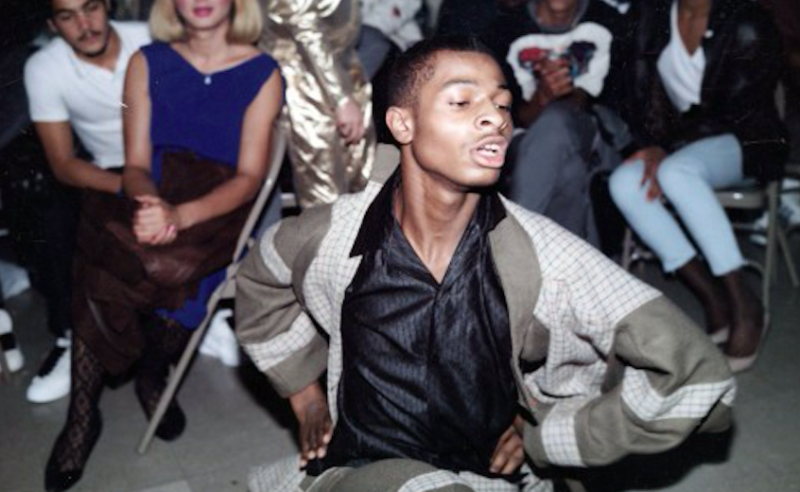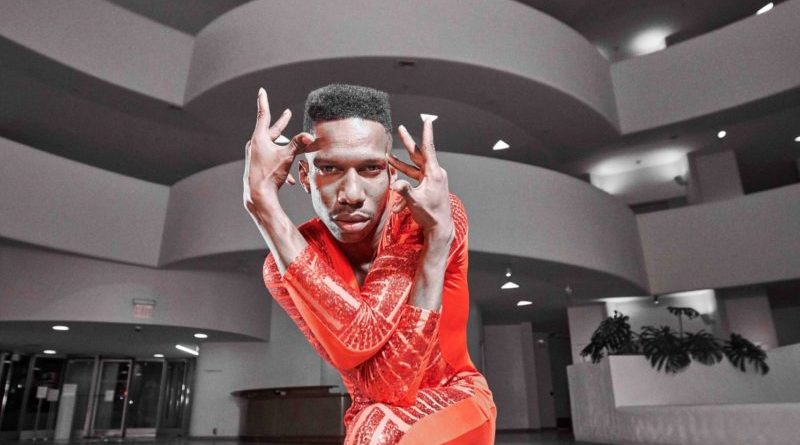INTERVIEW: Ballroom ‘Legend’ comes to Guggenheim with vogue tribute
Photo: Les Ballet Afrik featuring Omari Wiles will celebrate ballroom culture at the Guggenheim. Photo courtesy of Robert Altman / Provided by Michelle Tabnick PR with permission.
Thanks to a number of artistic offerings — chief among them the TV show Pose and the still landmark documentary Paris Is Burning — the ballroom scene from the 1980s and 1990s is still as vital as ever. In fact, this world of ball culture and its unique dance styles still inspire artists in 2020, and many of them are honoring the past “Icons” and “Legends” by creating new works and carrying on the ball for future generations. For a perfect example, one only has to look at the life and career of choreographer Omari Wiles, founding father of the House of Oricci.
Wiles, who was born in Senegal, has been around dance his entire life. His parents founded the Maimouna Keita School of African Dance in New York City, according to press notes, and he continued the traditions by training under the likes of Ronald K. Brown, Assane Konte and Ephrat Asherie, among others. His chosen choreographic styles have included everything from contemporary to voguing, the unique form of expressive dancing that ballroom culture celebrates.
In fact, there were so many styles influencing Wiles that he decided to create his own: he is credited with originating AfrikFusion, which fuses African dances and Afrobeat with house dance and voguing, press notes indicate. He also founded Les Ballet Afrik, a dance company that is set to premiere a new piece at the Guggenheim Museum in New York City. That work, called New York Is Burning, will have a special “Works & Process” presentation Jan. 13-14 at the famed art museum. (The actual world premiere comes in March.)
New York Is Burning speaks directly to ball culture, voguing and the documentary Paris Is Burning, which was released 30 years ago. The film, favorably reviewed by Hollywood Soapbox, documents young performers enraptured by the ballroom scene in the Big Apple. These African-American and Latino LGBTQ+ dancers often faced discrimination and violence in their personal lives, but in the ballroom, they were able to be themselves — and sometimes adopt the personalities of bold, energetic performers, often in drag.
Wiles has bonafide credentials as a voguer because besides founding the House of Oricci (a “house” is a family of performers), he was given the honorary status of “Legend” for his 10 years of dancing dominance.
Recently Hollywood Soapbox exchanged emails with Wiles about his new Guggenheim commission. The “Works & Process” presentation will also include a selection from Ephrat Asherie Dance’s UnderScored, which will receive its proper world premiere in fall 2020. Questions and answers have been slightly edited for style.
What can audiences expect from New York Is Burning?
The audience can expect not only a entertaining and colorful show but a lesson in ballroom culture and the many values the LGBTQ ballroom scene has developed over the years to maintain this creative space/outlet for those who needed to free their oppressions!

How influential was the movie Paris Is Burning on the dance piece?
The documentary Paris Is Burning gave the world the opportunity to look into this fantasy world they only heard whispered about! For me I’ve lived Paris Is Burning for the past 18 years. The documentary helped me by allowing me to also see in the past before my time now [and] not just hear about the stories from the ‘Icons’ in my time! This piece is influenced by the energy and soul of ballroom, that same energy that captivated those who open their eyes to watch Paris Is Burning.
What do you love about ball culture?
What I love the most about LGBTQ ball culture is the competitive families and the fight that it puts in everyone that hits the floor. To make us strive to be the best us! The gatherings of Black and Latino and now all races creatively tapping into what is cultural excellence.
What motivated you to found the House of Orrici?
… I have been a leader in my previous House Mizrahi, and I felt a shift in ballroom as far as leaders and the ‘Legends’ of today taking the roles of the ‘Icons’ before us. My whole life has been about teaching and being a historian of culture! It was time I create history: the International Royal House of Nina Oricci.
Do you like that voguing has entered the mainstream?
I have a like and dislike for ballroom becoming more mainstream! Although many opportunities have come from the exposure, I still feel like ballroom needs its exclusivity in order for the culture not be saturated. Ballroom will always have a hand [in] pop culture. We are influencers and creatives. Give ballroom its own platform within mainstream to showcase our own talents.
How would you define the AfrikFusion style?
Afrik is a culture clash of traditional dance styles. Afrik came to existence because it’s the way that I see how cultures are connected through movement. How dance has both masculine and feminine energies, connecting Black and Latino influences in the LGBTQ communities. Fusing vogue, house and Afro — the creativity is endless.
By John Soltes / Publisher / John@HollywoodSoapbox.com
Les Ballet Afrik, featuring Omari Wiles, will offer a “Works & Process” performance Jan. 13-14 at the Guggenheim in New York City. A selection from New York Is Burning will be presented along with a selection from Ephrat Asherie Dance’s UnderScored. Click here for more information and tickets.

